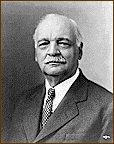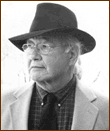AIS 100: Introduction to American Indian Studies
|
AIS 100: Introduction to American Indian Studies |
V. CONTEMPORARY NATIVE AMERICA
A. Post World War II,
Termination, Civil Rights
As in the Great War (WWI), Native Americans served their country by a population ratio of 16:1 and this continued in subsequent conflicts thru the Gulf War. The effect of this was to accentuate inequities in the home front and ultimately fuel new civil rights movements by many disparate groups in American society. In 1946 Indian Veterans and tribal leaders demanded resolution of invalid or broken treaties and the US government formed the Indian Claims Commission. Various native American groups filed claims for land illegally taken and some groups won their claims while others have not. In the 1950's the Eisenhower Administration ushered in a new Indian policy called Termination. This policy was actually precluded by a "Job Relocation Program" and followed with a House Concurrent Resolution 108 in 1953 which in effect terminated the trust relationship with many federally recognized tribes. The effect was a massive migration of Native Americans to major cities where it was obvious that the promise of economic opportunity and any semblance of equality was not going to be achieved by relocation from reservations to cities. Such disparity in conjunction with the increased loss of cultural ties from being away from traditional community and lifestyles produced grass roots movements from the urban Native Americans. As the Civil Rights Movements and Vietnam War protests revealed a greater willingness toward rebellion, urban Native Americans formed organizations like American Indian Movement (AIM) in 1968 . Also, because of media attention, older grass roots organizations like the National Congress of American Indians (NCAI) formed in 1944 continue to be active, but are less visible to the public.
AIM first occupied Alcatraz Island. in San Francisco in 1969, which was based on precedent set by the Reorganization Act of 1934. Any land under federal control can be returned to appropriate Native Americans if the US Government is no longer using it. In 1972 AIM drew national attention with a protest march to Washington, D.C., called 'The Trail of Broken Treaties'. After a 6 day siege of the Bureau of Indian Affairs (BIA) offices the press and other Native American groups like members of the National Tribal Chairman's Association (NTCA) claimed that the militants had done considerable damage to property and removed records. Such attention and accusations escalated the reputation of AIM as being violent and dangerous thus bringing in full FBI scrutiny and activity directed to separating political factions of Native American groups. This was played out with AIM returning to rural roots by seeking spiritual guidance from traditionalists at the Pine Ridge community of Ogallala in South Dakota. However, AIM's presence brought confrontation with less traditional elements of the current tribal council. In 1973 AIM occupied the small town of Wounded Knee which lasted 70 days with Federal Agents escalating the incident to an armed siege. In effect a civil war continued conflicts for three years. In 1975 a shootout erupted on Pine Ridge at Ogallala that resulted in 3 deaths, including 2 FBI agents and one Native American. Leonard Peltier was arrested and convicted for the murder of the FBI agents. Later, evidence revealed that he was not the perpetrator yet no retrial or pardon has been effected. AIM was effective in drawing attention to injustices and problems Federal Indian policy, but its reputation has also alienated both non-Indian and some American Indians.
B. Sovereignty and Religious Freedom
One effect of the general shift with the civil rights movement generated policy after 1976 that have been referred to as Self-Determination. Certainly these shifts produced changes in three specific areas: health, economic development, and resource management. For federally recognized Native Americans the treaties supposedly provided for the future needs of Native Americans. However, the U.S. government lied and /or simply avoided their trust responsibilities. Civil rights tended to focus on equal rights in society, but for Native Americans it included the keeping of treaty promises for land and resources taken by non-Indian immigrants. When protest groups like AIM arose they were arguing mainly for recognition of treaty rights. Most Americans do not know about this and assume that the government is providing Native Americans with a special form of welfare, which is not the case. This difference and lack of understanding of the treaty relationship gives the wrong impression that the Native Americans are getting preferential treatment or that non-Indians are being treated unfairly. Americans like an equal playing field, especially in their own self interest, and such equality was designated in the treaties. It could be argued that the provisions of the treaties were woefully inadequate and further it is clear that the government has reneged on those original promises. Self determination was taken seriously by many Native American leaders and it was clear that improvement would only come with greater sovereignty and economic independence. Initially tribal governments began building their own health care clinics, daycare/schools, and support services like fire and security. The federal government and local state governments did little in these areas as evidenced by numerous government reports and census statistics in the 1960's- 1980's. Many Native American grassroots organizations emerged in the same time period. Certain tribal council/governments recognized one advantage to doing business or production on a Indian reservation is the fact that a reservation is within federal jurisdiction.
C. Gaming
The federal jurisdiction fact has allowed Native Americans to operate under federal law and not state law. However, pressure from the states led to the Indian Gaming Regulatory Act (IGRA) in 1988 and eventually led to gaming and the boom of Indian Casinos. The states have to be negotiated with even though they really have no right to gaming profits. The compromise is a boon to Native Americans and states like California. The casino business allowed the tribes to provide what the federal government continues not to and is giving the means to also preserve and revitalize cultural resources including people. The gaming justified and legal but also has generated a fair amount of jealousy and greed from all corners. The positive and negative effects on Indian Gaming will become clearer in the 21st century. At the same time other Native American lawyers were working diligently to protect cultural resources and desecration of graves, which led to Native American Graves Protection and Repatriation Act (NAGPRA) in 1990. Native American communities have also become active in global issues and have become active in world movements of indigenous people such as WIPCE. Common issues of cultural resources, education, health and sovereignty are focused on.
Notable American Indians
 Charles Curtis |
 N. Scott Momaday |
 Robbie Robertson |
 Sequoyah |
|
Information Please® Database, © 2007 Pearson Education, Inc. All rights reserved.
Back: AIS 100
Copyright © S. J. Crouthamel